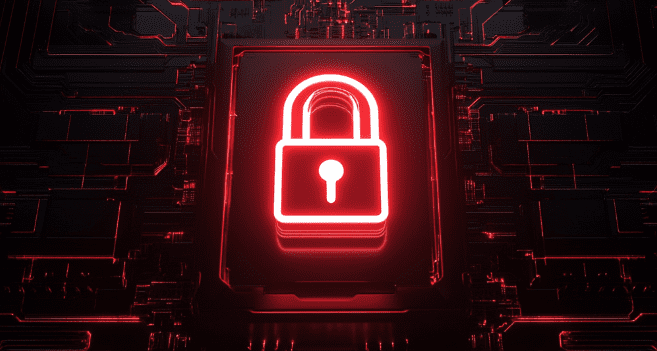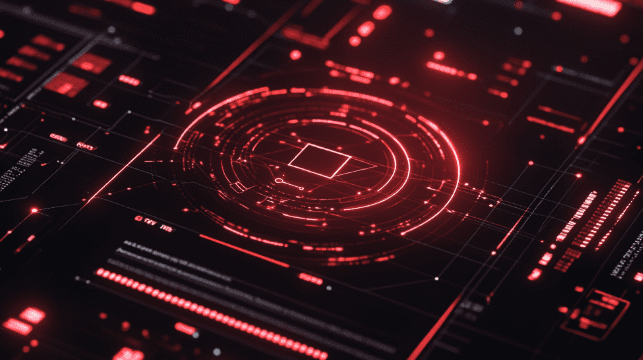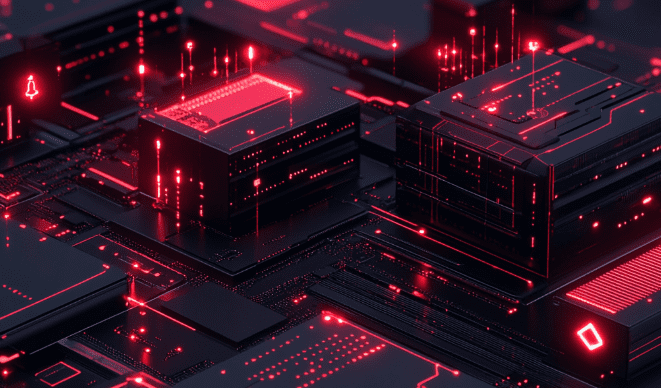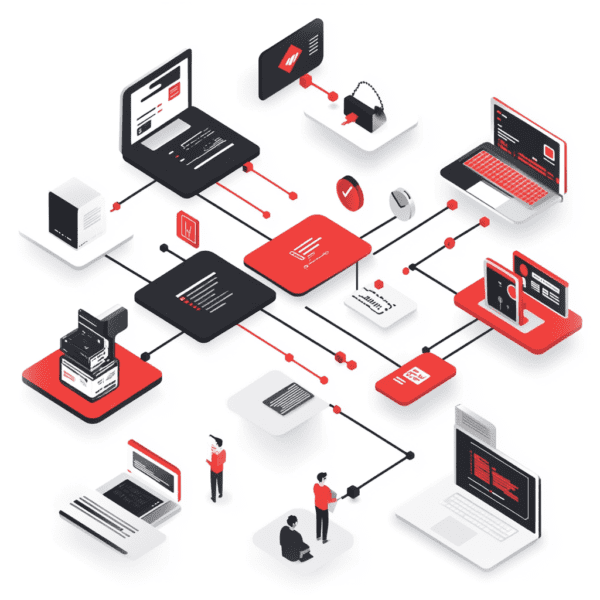How to Protect Your Business from Ransomware Attacks
What would happen if you arrived at work tomorrow to find every digital file in your business encrypted and inaccessible? For thousands of businesses each year, this nightmare becomes reality when ransomware strikes, bringing operations to a grinding halt and demanding substantial payments for data recovery.
Table Of Contents
- The Evolving Ransomware Landscape
- Essential Strategies to Prevent Ransomware Attacks
- Developing an Incident Response Plan
- Ransomware Recovery Strategies
- Building Long-Term Resilience Against Ransomware
- Conclusion
- FAQs
In 2023, ransomware attacks increased by 37% compared to the previous year. With average ransom demands exceeding $1.5 million and recovery times stretching to 22 days, the threat to business continuity has never been more severe. Even more concerning, 60% of small businesses that suffer a ransomware attack close within six months due to the financial impact and reputational damage.

This guide provides practical, actionable strategies to protect your business from these devastating attacks. By implementing robust security measures and following established best practices, organizations can significantly reduce vulnerability and ensure business resilience against this growing threat.
The Evolving Ransomware Landscape
Ransomware attacks have evolved dramatically from their early days of opportunistic, broadly-targeted campaigns. Today’s attacks are sophisticated operations often conducted by organized criminal groups using advanced techniques to maximize damage and extortion potential.
Current Ransomware Trends and Statistics
The data paints a concerning picture of the current threat landscape:
- The average cost of a ransomware attack, including ransom payments, downtime, and recovery expenses, exceeds $4.5 million
- Double and triple extortion tactics have become standard, where attackers not only encrypt data but threaten to leak sensitive information publicly

- Attacks increasingly target backup systems first to prevent recovery without payment
- Ransomware-as-a-Service (RaaS) models have lowered the technical barrier to entry, allowing more criminals to deploy attacks
- Critical infrastructure and supply chains face heightened targeting, creating cascading effects across multiple organizations
The financial services, healthcare, manufacturing, and education sectors face particularly high targeting rates due to their valuable data and often vulnerable security postures. Small and medium-sized businesses increasingly find themselves in attackers’ crosshairs, as they typically have fewer security resources while still possessing valuable data.
Common Attack Vectors
Understanding how ransomware infiltrates organizations is essential for effective protection. The most common entry points include:
- Phishing emails remain the primary entry point, with malicious attachments or links leading to infection
- Remote Desktop Protocol (RDP) exploitation through weak credentials or unpatched vulnerabilities
- Software vulnerabilities in operating systems and applications

- Supply chain compromises targeting trusted vendors to gain access to multiple organizations
- Malicious websites and drive-by downloads infecting visitors through browser vulnerabilities
Essential Strategies to Prevent Ransomware Attacks
Implementing a multi-layered defense strategy is crucial for effective protection. The following approaches form the foundation of robust ransomware prevention.
Employee Education and Awareness
Human error remains the leading cause of successful ransomware attacks. Organizations must invest in comprehensive security awareness training that:
- Teaches employees to identify and report phishing attempts
- Establishes clear procedures for verifying requests for sensitive information
- Creates a culture where security is everyone’s responsibility
- Provides regular updates on emerging threats and attack techniques

Training should be ongoing rather than a one-time event, with regular refreshers and simulated phishing exercises to reinforce good practices. When employees understand their role in organizational security, they become a powerful first line of defense.
Hyperion Networks offers security awareness training programs that can be customized to any organization’s specific needs and threat profile.
Implement Strong Authentication Controls
Multi-factor authentication (MFA) represents one of the most effective measures to prevent ransomware attacks. By requiring additional verification beyond passwords, MFA can block unauthorized access attempts even when credentials are compromised.
Organizations should:
- Implement MFA across all remote access points, email systems, and critical applications
- Establish strong password policies requiring complexity and regular changes
- Consider adopting a Zero Trust security model that verifies every user and device attempting to access resources
Proactive Cyber Security services should include advanced authentication solutions that can significantly strengthen organizational access controls.
Establish Comprehensive Data Backup Strategies
Perhaps the most crucial element of ransomware protection is maintaining secure, tested backups that can be used for recovery without paying the ransom.
The industry-standard 3-2-1 backup strategy remains highly effective:

- Maintain at least 3 copies of important data
- Store backups on 2 different media types
- Keep 1 copy offsite or in the cloud
Critical considerations for backup systems include:
- Ensuring backup systems are not directly accessible from the main network
- Regularly testing restoration processes to verify data integrity
- Implementing versioning to maintain multiple recovery points
- Encrypting backup data to prevent compromise
Data Backup & Recovery services should provide robust solutions tailored to business needs, ensuring critical data remains protected and recoverable.
Maintain Rigorous System Security
Effective ransomware prevention requires consistent system maintenance and security practices:
- Regular patching and updates: Promptly apply security patches to operating systems and applications to address known vulnerabilities
- Endpoint protection: Deploy comprehensive anti-malware solutions with specific ransomware detection capabilities
- Application control: Implement whitelisting to prevent unauthorized programs from executing
- Email security: Use advanced filtering to detect and block phishing attempts and malicious attachments

These technical controls form a critical barrier against initial infection attempts. Organizations must implement robust ransomware solutions that combine prevention, detection, and response capabilities to address the full attack lifecycle.
Implement Network Segmentation and Security
Network design plays a vital role in containing and limiting ransomware spread. Organizations must implement robust network security measures that include:
- Network segmentation – Divide networks into isolated zones to prevent lateral movement
- Firewall protection – Deploy next-generation firewalls with advanced threat detection
- Traffic monitoring – Implement tools to identify suspicious network activity
- Email security gateways – Filter malicious content before it reaches user inboxes
Even basic network segmentation can significantly limit an attack’s impact by preventing ransomware from spreading throughout the entire organization.

Developing an Incident Response Plan
Despite the best preventative measures, organizations must prepare for the possibility of a successful ransomware attack. A well-designed incident response plan enables rapid containment and recovery, minimizing damage and downtime.
Key Components of a Ransomware Response Plan
An effective incident response plan should include:
- Clear roles and responsibilities – Designate team members responsible for each aspect of the response
- Communication protocols – Establish procedures for internal and external communications during an incident
- Isolation procedures – Define steps to quickly isolate affected systems to prevent spread
- Reporting requirements – Understand obligations regarding notification to customers, partners, and regulatory authorities
- Recovery priorities – Identify critical systems to be restored first
- Decision frameworks – Establish criteria for making difficult decisions, such as whether to pay a ransom

The plan should be documented, regularly reviewed, and practiced through tabletop exercises to ensure all team members understand their roles and can execute effectively under pressure.
Working with Law Enforcement and Security Partners
Establishing relationships with law enforcement agencies and security partners before an incident occurs can significantly improve response effectiveness. The FBI and other agencies often have resources that can assist with investigation and recovery.
Professionals always maintain relationships with law enforcement and security communities, providing clients with valuable connections and resources during crisis situations.
Ransomware Recovery Strategies
Even with robust preventative measures, organizations must be prepared for recovery operations if ransomware strikes.
The Recovery Process
A systematic approach to recovery includes:
- Disconnect affected systems from the network to prevent spread
- Determine the attack vector and extent of compromise
- Rebuild systems from secure backups or clean installations
- Ensure restored systems are free of malware before reconnecting
- Address vulnerabilities that enabled the initial compromise

Recovery operations should follow a documented plan that prioritizes critical business functions while maintaining security throughout the process.
Data Recovery Options
When facing a ransomware attack, organizations typically have three options:
- The preferred approach when recent, uncompromised backups are available
- A last resort that carries significant risks, including the possibility that decryption tools won’t work
- In some cases, partial data recovery may be possible through file recovery tools or fragments remaining on systems
Hyperion Networks’ Disaster Recovery solutions provide businesses with reliable, secure recovery options that minimize the impact of ransomware attacks.

Building Long-Term Resilience Against Ransomware
Protection against ransomware requires ongoing commitment and adaptation as threats evolve. Organizations should:
- Conduct regular security assessments to identify vulnerabilities
- Update security controls as new threats emerge
- Maintain awareness of current attack techniques and trends
- Review and test incident response and recovery plans regularly
- Consider cyber insurance as part of a comprehensive risk management strategy
By developing a security-focused culture and implementing layered technical controls, businesses can significantly reduce their ransomware risk profile and build long-term resilience against these devastating attacks.
Conclusion
Ransomware represents one of the most significant threats facing businesses today, with potential impacts ranging from temporary disruption to permanent closure. By implementing comprehensive prevention measures, developing effective response capabilities, and establishing robust recovery options, organizations can protect critical assets and operations from these devastating attacks.
The investment in ransomware protection pays dividends beyond security alone, improving overall IT resilience and business continuity capabilities. Organizations that establish a proactive security posture not only reduce their risk of successful attacks but position themselves to recover quickly and effectively when incidents occur.
Hyperion Networks provides comprehensive ransomware protection services that help businesses build resilience against these evolving threats. From advanced prevention technologies to rapid response capabilities, the right security partner can make all the difference when facing today’s sophisticated ransomware landscape.
FAQs
What’s the first step after discovering a ransomware attack?
Immediately disconnect affected systems to contain the spread. Activate your incident response plan and notify your IT security team.
Should a business pay the ransom?
Generally not advised. Only 65% of businesses recover all data after payment. Consult cybersecurity experts and law enforcement for alternatives.
How long does ransomware recovery typically take?
With proper preparation, critical operations may resume in 24-48 hours. Complete recovery usually takes 2-3 weeks, longer without effective backups.
Which businesses are most vulnerable to ransomware?
Small and medium-sized businesses in healthcare, finance, education, and government sectors face higher risks due to valuable data and limited security resources.
How can businesses assess their ransomware protection?
Regular security assessments, including penetration testing, vulnerability scanning, and backup verification. Hyperion Networks offers comprehensive security audits.
Hyperion Networks – Protect Your Business from Ransomware Attacks
Advanced cybersecurity solutions to prevent ransomware threats
Proactive monitoring and rapid response to keep your data safe
Employee training and backup strategies for complete protection
⭐⭐⭐⭐⭐ Rated 4.9/5 by Satisfied Clients

About Joe
Joe Ray is a seasoned technology executive with a proven track record of leadership and innovation in the IT and telecommunications industry. As the President and CEO of Hyperion Networks, Joe has been instrumental in guiding the company’s growth and helping businesses leverage advanced technology solutions to meet their evolving needs. With over a decade of experience spanning roles such as Network Engineer, Network Technician, and Network Administrator at companies like Sharp Business Systems, Knox County Schools, and SHIELDS Electronics Supply, Joe’s diverse background brings a wealth of technical and managerial expertise to the table.
Related articles:
Strategic Tech Planning to Drive Business Growth and Profit
5 Common IT Challenges and How to Overcome Them

